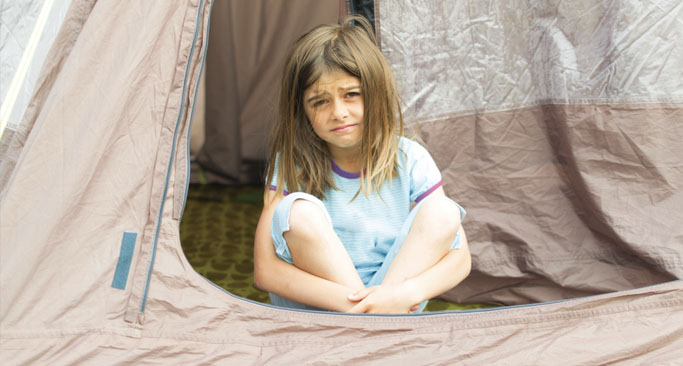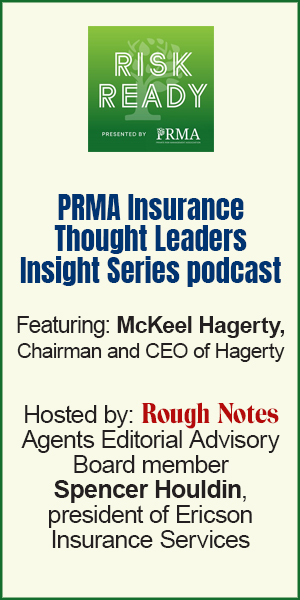Claims trends and risk management
best practices for summer youth camps
By Christopher W. Cook
This writer never went to summer camp growing up, although I vaguely know about what happens there through other media. I recall that Ernest P. Worrell, played by the late Jim Varney, once saved camp in the movies, and on the smaller screen there was the animated series Camp Candy, featuring a cartoon version of the late John Candy, and the Nickelodeon sitcom Salute Your Shorts set at the fictional Camp Anawanna (a play on the phrase “I don’t want to.”)
Going back even further, having listened to my parents’ vinyl collection, there was also the one-day “Camp Granada” experience delivered in Allan Sherman’s classic “Hello Muddah, Hello Faddah! (A Letter from Camp).” (Who caught the nod in this article’s title?)
Today’s summer youth camps still feature some of the “traditional” activities from the 1963 novelty song, e.g., hiking, baseball and swimming, and for all participants, employees and volunteers involved, risks continue to exist. (Did the search party ever find Jeffrey Hardy?)
“Aquatics is probably the most frequently offered activity, and that ranges from pools to lakes to oceans, [anything from] swimming to watercraft like kayaking, canoeing and boating activities,” says Tori Barnes, risk control specialist at Church Mutual. “Next would be adventure sports like rope courses and zip lines, rock climbing or climbing walls. Mountain biking and regular biking tend to fall in this area.
“The third category most frequently seen is team sports, so soccer, basketball, hockey, baseball and softball. We’re seeing golf start to pop up in some of our Northeast camps.”
For team sports, this can range from recreational pick-up games to organized competitive leagues between multiple camps, like in the late ’70s comedy Meatballs.
From a risk management perspective, preferred activities include those with less risk exposure, such as those in the arts realm, dancing, and hiking and nature discovery. But accidents do happen, especially considering the number of operating camps and participating campers annually in the United States.
“A recent economic research study by the University of Michigan and the American Camp Association recognizes about 20,175 camp operations in the United States, and that counts for day camps and overnight-camp operations that are longer than three days,” Barnes says.
Of those, about 70% are nonprofit, 20% are for profit, and 10% are municipality- and government-run programs.
“Annually, there are about 26 million campers or participants in camp, which includes adults who participate through conference centers, family camps, or vulnerable or special needs programs,” she adds.
The survey acknowledges 986,428 employees for camps with the average camp using 10 to 15 volunteers every season.
“Kids harming kids … has really spiked and requires a lot of attention from people who are operating programs in this field.”
—Tori Barnes
Risk Control Specialist
Church Mutual

Emerging trends and mitigation best practices
For risk managers with summer youth camp clients, a number of trends should be carefully examined and mitigated.
“The first one that has been impacting camps are claims related to peer-to-peer abuse, which is a broad nomenclature that can account for sexual abuse, physical abuse, or emotional abuse,” Barnes says. “Kids harming kids … has really spiked and requires a lot of attention from people who are operating programs in this field.”
For prevention strategies, “it comes down to a couple of key practices that camps need to take a close look at to ensure that they’re doing it with fidelity and consistency,” Barnes says. “The first is screening. There’s research out there that shows that lack in screening processes show up when these kinds of claims are investigated.”
Screening methods include good interviewing questions, reference checking and background checking—and understanding the different types of background checks. These include both state and national criminal background checks as well as sex offender registries and the Child Abuse Central Index (CACI) database that focuses on child abuse and neglect.
“Camps need to not have this just be a check box, but really be checking things intentionally based on the kinds of programs that they’re offering, and then really understanding what they’re screening for,” says Barnes. “Screening is their chance to understand how to look for red flag behaviors so that they can prevent anybody who’s trying to cause harm from coming in.”
While screening processes are generally focused on employees and volunteers, “more camps are being encouraged to screen their campers so they have information about their behaviors and requirements coming into the space, so that they can also prepare kids from the peer-to-peer abuse that might be happening and identify any places where they need to put more structure,” Barnes adds.
This can be done by adding questions to the registration process about any special needs a child may have. “It’s certainly not a measure for exclusion, but actually for inclusion and for better planning for the staff to be prepared and trained appropriately for the kids that are coming, instead of figuring it out two weeks into a kid being at a seven-week overnight program,” Barnes says.
Another best practice is supervision in appropriate locations on the premises. “Oftentimes, claims happen in places where supervision is lacking, so vigilant supervision [is necessary], especially around high-risk areas like bathrooms, changing areas and cabins that have privacy,” Barnes says.
“Supervision is key, supervision that recognizes concerning behaviors like bullying, hazing, rule breaking, and boundary breaking. Identifying those kinds of behaviors early can often be a good preventative measure to a situation that could escalate into actual abuse or harm.”
Staff should also be trained on abuse prevention strategies annually. “We’re trying to push our own camp [clients] to create better partnerships with parents. It isn’t just training the staff on these prevention strategies, it’s about being honest with parents about what we’re doing and how we handle these things,” Barnes says.
From a property standpoint, some of the most frequent claims come from fire, wind and hail, and cold temperatures.
“Our largest claims are related to fire,” says Tracy Schmeltzer, Church Mutual’s assistant vice president of camps, sports and outdoor rec, “so we have to ensure that proper electrical inspections are done at camps. Outside of electrical fires, there’s also the possibility of fires related to campfires, which is a common activity at camp. If [the camps are in] dry areas, and there are [fire] warnings out there, they shouldn’t even have campfires in certain situations.”
Wind and hail claims are the next highest. “The nature of camp is in the woods surrounded by trees, so when there is heavy wind, [you should make sure that] not only the cabins are protected but, from a liability standpoint, the campers and the staff,” Schmeltzer says. “Ensure that tree branches are pruned and they’re not hanging over buildings, especially cabins that kids are sleeping in. Have an arborist inspect and ensure that any trees that are dying are removed.


“Freeze claims have been more on the rise … in areas that are not typically colder climates. It’s important for camps to drain their water during the offseason, especially if no one is on the premises.”
—Tracy Schmeltzer
Assistant Vice President, Camps, Sports and Outdoor Rec
Church Mutual
“Freeze claims have been more on the rise … in areas that are not typically colder climates,” Schmeltzer continues. “It’s important for camps to drain their water during the offseason, especially if no one is on the premises. Protect the pipes if water [is used] throughout the year, and make sure that the temperature is appropriate in the buildings so water pipes don’t freeze. It turns out to be significant damage, especially if somebody isn’t on the premises and the water sits the whole off season, which can lead to mold.
“We have sensors available at Church Mutual that we offer our clients that give alerts when water is present,” she adds.
“Sometimes there are 80 buildings and people not in them for many months of the year,” Schmeltzer notes. “The more alert systems that can be built in, like notifying someone if there is smoke, the more opportunity there is to stop something from happening, especially if it happens during a time when people aren’t onsite.”
Less frequent, but a more severe claim being carefully watched is drowning accidents.
“We’re watching this [because] we’re seeing incidents happen when the protections that are typical and expected are in place,” says Barnes. “A lot has to do with swimmers who have low swimming ability; we call them non-swimmers.
“It should be common for camps and programs serving youth to do swim tests to really understand a swimmer’s ability. The problem is, even if we know that [someone has] a lack of swimming skills, they usually need a little bit more [than just staying in the shallow end].”
This problem can be addressed by having those individuals wear life jackets or putting adults in the water within arm’s reach.
An additional sports-related claim being monitored is concussions. “We’re working with camps to make sure that personal protective equipment (PPE) is in place if they are doing anything that is tackle or has high physical contact,” Barnes says. “Camps, for the most part, do a pretty good job. Training of staff is important for [them] to recognize symptoms of concussions so that they can address them immediately.
“[Concussions] aren’t just happening in football, but also in hockey, lacrosse, rope courses, and biking. Water activity is another area that we’re seeing falls—from boating, skiing, and tubing—where [campers] hit the water hard, and concussions are a part of it.”
Overlooked insurance coverages
While risk management is always the first step, certain coverages for camp policies shouldn’t be overlooked.
“Business interruption coverage helps protect the camp in case of a direct loss, like from a windstorm,” Schmeltzer says. “Maybe some of the buildings are not able to be used and it’s during the camp, or they have to either close the camp completely or delay it. [Business interruption] protects the camp from that income loss. There might also be extra expenses related to that if, [for example], the sports building is no longer [usable] and they have to rent a facility.”
Another coverage is building ordinance. “A lot of our camps have buildings that are older, and when there is a loss to that building, there [might be] certain codes that have come into place and the building needs to be repaired at a different level than what it was,” Schmeltzer says. “Ordinance coverage gives extra protection when a code is required.”
Liability insurance is a no-brainer, but it can be overlooked when it comes to multiple organizations sharing the campgrounds. “Many of our camps lease out space in the offseason to other groups. Ensure that those other groups have liability insurance in place and that they name the camp itself as an additional insured,” says Schmeltzer. “Their activities are their own, and they should have their own insurance; that [liability coverage] protects the camp itself.”
Lastly, participant accident coverage could be a beneficial addition to a youth camp policy. “This would help with injuries. Accidents and illnesses happen. If you have to take a kid to the emergency room, it helps with the cost of that medical piece associated with injuries to campers,” Schmeltzer says.
Final thoughts
For agencies with summer youth camp clients, it’s always wise to become experts in that field and share resources available. “Camps are such a specialized area; ensure that you have knowledge of that space and know the coverages you need,” Schmeltzer says.
“A baseline thing that camps can do is become accredited by the American Camp Association,” Barnes adds. “We see overall stronger risk and safety management programs in camps that are accredited. There’s a fee and there’s preparation and annual on-site visits [to being approved], but the standards are available to anybody, which is a good foundational place to start when thinking about your risk management.”
Additional information on background checks, and resources like guides and checklists and videos can be found on Church Mutual’s website.
For more information:
American Camp Association
acacamps.org
Church Mutual
churchmutual.com






